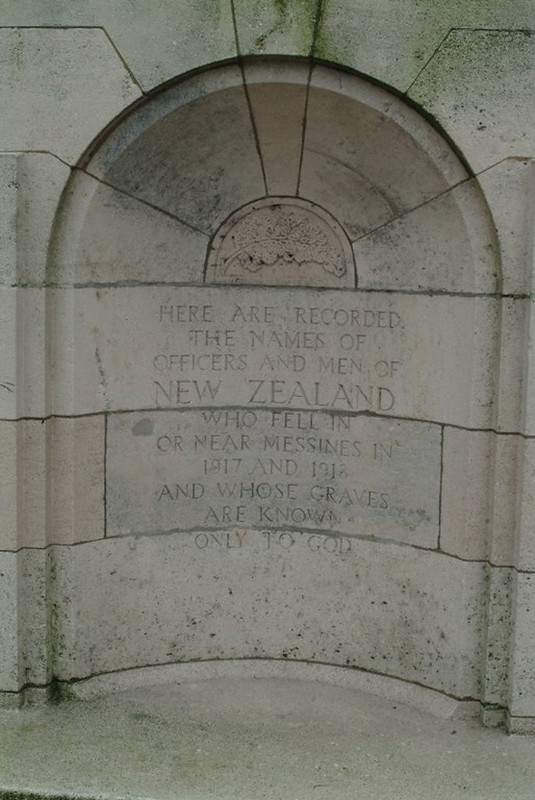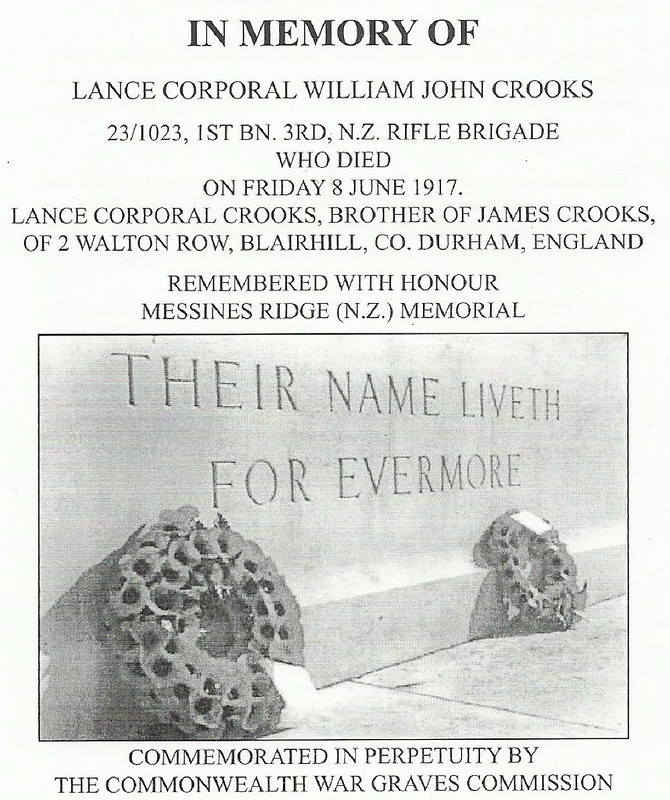Wyliecoyote
New member
In Memory of my Great Uncle
Lance Corporal William John Crooks
Battalion Sniper / Observer
New Zealand Expeditionary Force
Company D, 1st Battalion Trentham Regiment
3rd New Zealand Rifle Brigade
Born : 5 November 1893
Died : Friday, 8 June 1917, Messines, Belgium
Killed in Action during a bombardment after a heavy shell burst in the trench his unit was holding, burying him and three of his comrades. After they were dug out, it was found that they were dead. One piece of shell fragment had pierced his neck, and a second pierced his chest.
90 years ago today.
Lance Corporal William John Crooks
Battalion Sniper / Observer
New Zealand Expeditionary Force
Company D, 1st Battalion Trentham Regiment
3rd New Zealand Rifle Brigade
Born : 5 November 1893
Died : Friday, 8 June 1917, Messines, Belgium
Killed in Action during a bombardment after a heavy shell burst in the trench his unit was holding, burying him and three of his comrades. After they were dug out, it was found that they were dead. One piece of shell fragment had pierced his neck, and a second pierced his chest.
90 years ago today.




